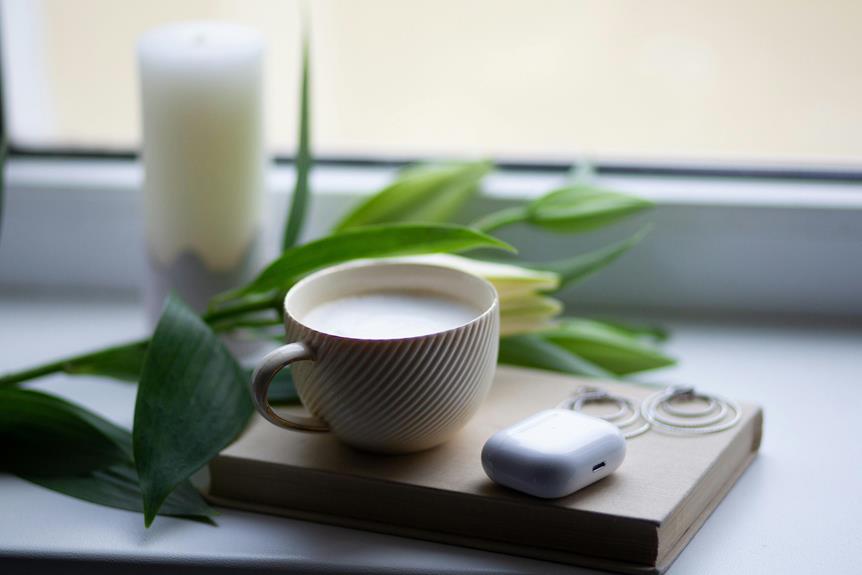How to Tell if Coffee Is Rancid: a Freshness Guide

When we contemplate our daily coffee ritual, freshness plays an essential role in our experience. We can all agree that the aroma and flavor of freshly brewed coffee elevate our mornings, but how can we ascertain if the beans have gone bad? By examining a few key indicators, we can easily determine whether our coffee is still good to brew. Let's explore the signs of rancidity, starting with the most obvious clues that can help us preserve the quality of our daily cup.
Understanding Coffee Freshness
When it comes to understanding coffee freshness, we should recognize that freshness plays a critical role in the flavor and aroma of our brew.
Several freshness factors, including roast date, storage conditions, and coffee aging, greatly influence our experience.
Signs of Rancid Coffee
When we assess the quality of our coffee, there are several key signs that indicate it may be rancid.
We should pay attention to any unpleasant odors, noticeable changes in taste, and visual alterations in the beans themselves.
Unpleasant Odor Detection
Detecting unpleasant odors is essential in identifying rancid coffee, as the scent can reveal much about its freshness.
An unpleasant aroma often indicates degradation, and we should pay attention to odor intensity. If the smell is noticeably off or stale, it's a strong sign that the coffee has lost its quality and may no longer be safe or enjoyable to consume.
Taste Alterations Observed
Beyond unpleasant odors, taste alterations are another clear indicator that our coffee may be rancid.
We often notice a significant shift in taste profiles, where once vibrant flavor notes become dull or flat. If the coffee tastes bitter, sour, or has an off-putting metallic quality, it's likely past its prime.
Recognizing these changes helps us enjoy fresh, flavorful brews consistently.
Visual Changes Noted
Visual cues can be telling indicators of rancid coffee. We should examine the bean texture and surface sheen closely. Here's a quick reference table to help us identify these visual changes:
| Indicator | Healthy Coffee | Rancid Coffee |
|---|---|---|
| Bean Texture | Firm and smooth | Dry or brittle |
| Surface Sheen | Oily, but not excessive | Dull or chalky |
| Color | Rich, dark brown | Faded or ashy |
Assessing Aroma and Flavor
When we take a moment to inhale the aroma of freshly brewed coffee, we're not just enjoying a pleasant scent; we're also engaging in an essential step to determine its freshness.
To assess aroma and flavor, we should consider:
- The brewing techniques used.
- The complexity of flavor profiles.
- Any off-putting odors that suggest rancidity.
These factors help us enjoy the best coffee experience.
Visual Clues to Look For
When we examine coffee beans, several visual clues can indicate rancidity.
We should look for any noticeable color changes, the presence of oil residue, or signs of mold and fungal growth.
Each of these factors can greatly impact the quality and safety of our coffee.
Color Changes in Beans
As we examine coffee beans, color changes can serve as critical indicators of freshness and quality.
Understanding coffee bean colors helps us identify potential rancidity. Pay attention to:
- Light brown: Indicates a lighter roast, often fresher.
- Dark brown: Suggests a medium roast, but watch for aging.
- Ashy or dull tones: Signify excessive roasting effects and possible staleness.
Oil Residue Appearance
One clear sign that coffee may be going rancid is the presence of an oily residue on the beans. This oil extraction occurs as the coffee ages, leading to flavor degradation. To help identify this issue, we can look for specific visual clues:
| Appearance | Possible Issue |
|---|---|
| Shiny, oily surface | Excessive oil extraction |
| Dull, dry beans | Freshness retained |
| Dark spots | Potential rancidity |
| Uneven sheen | Inconsistent quality control |
Mold or Fungal Growth
Mold or fungal growth on coffee beans is another critical indicator of rancidity that we must be vigilant about.
We should look for the following visual clues:
- Discoloration: Unusual green or black spots may indicate mold types.
- Texture changes: A fuzzy appearance can suggest the presence of fungal spores.
- Odor: A musty smell often accompanies moldy beans.
If we notice these signs, it's time to discard the coffee.
The Importance of Packaging
Effective packaging plays an essential role in maintaining coffee's freshness and preventing rancidity.
By utilizing high-quality packaging materials like foil or vacuum-sealed bags, we can greatly reduce exposure to air and moisture.
Additionally, employing advanced sealing techniques guarantees that coffee beans remain protected from environmental factors.
This combination helps preserve flavor and aroma, allowing us to enjoy our coffee at its best.
Proper Storage Techniques
Storing coffee properly is essential to maintaining its freshness and preventing rancidity.
To achieve this, we should follow these techniques:
- Use airtight containers to limit exposure to air.
- Consider vacuum sealing for ideal preservation.
- Keep coffee in a cool, dark place away from moisture and light.
How Long Does Coffee Last?
While we might enjoy the rich flavors of freshly roasted coffee, it's important to understand how long this beloved beverage actually lasts.
Typically, coffee shelf life ranges from a few weeks to several months, depending on storage conditions.
Freshness indicators, such as aroma and taste, help us determine quality.
After reaching its peak, coffee can become stale and lose its delightful characteristics.
Conclusion
In summary, we must prioritize evaluating the aroma, flavor, and visual appearance of our coffee to guarantee it's fresh and enjoyable. By recognizing the signs of rancidity, such as off-putting smells and dull flavors, we can maintain a high-quality brewing experience. Proper storage and packaging play vital roles in preserving freshness. Ultimately, by being vigilant about these factors, we can savor the rich, inviting taste of our coffee for as long as possible.






